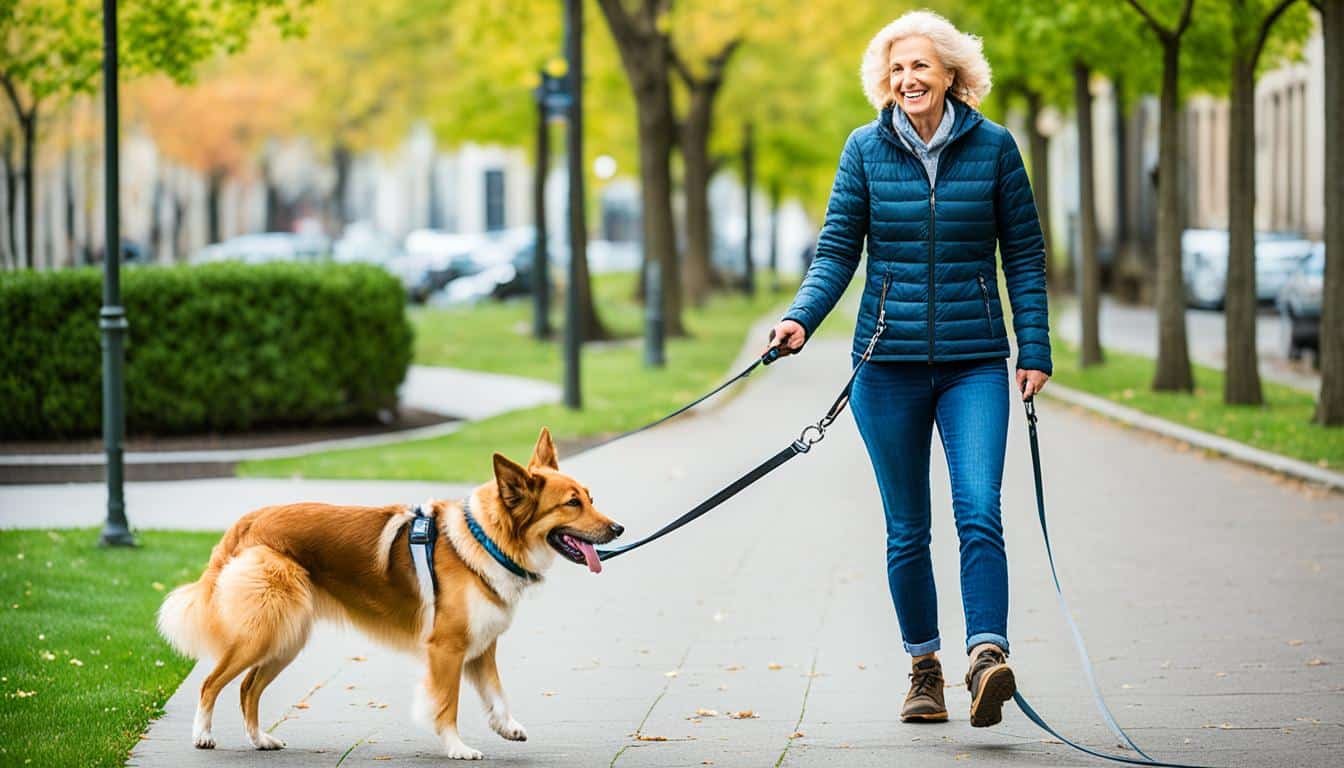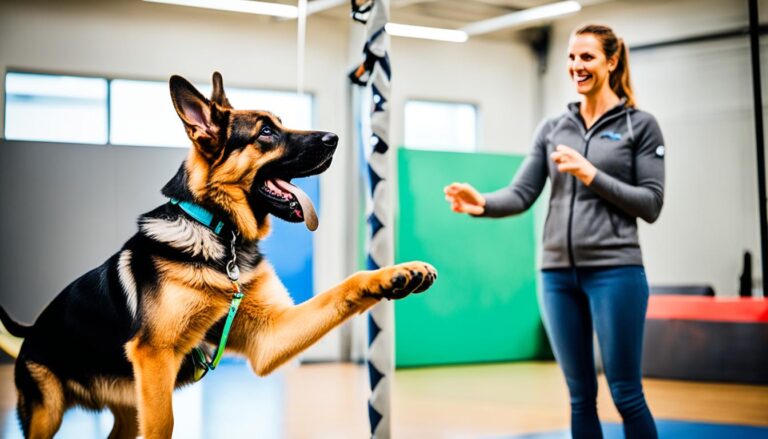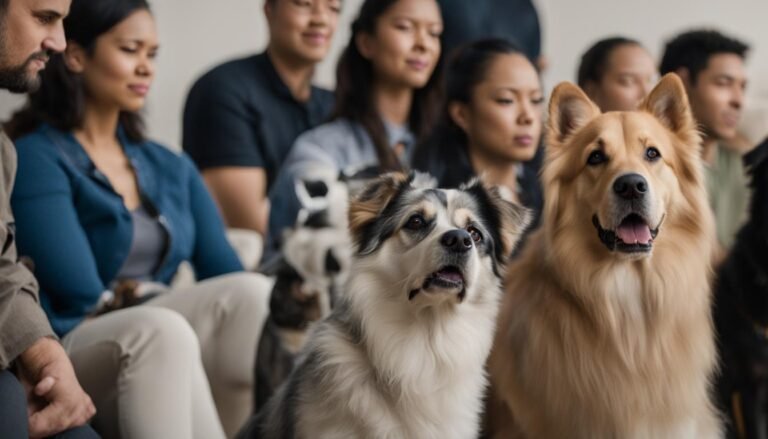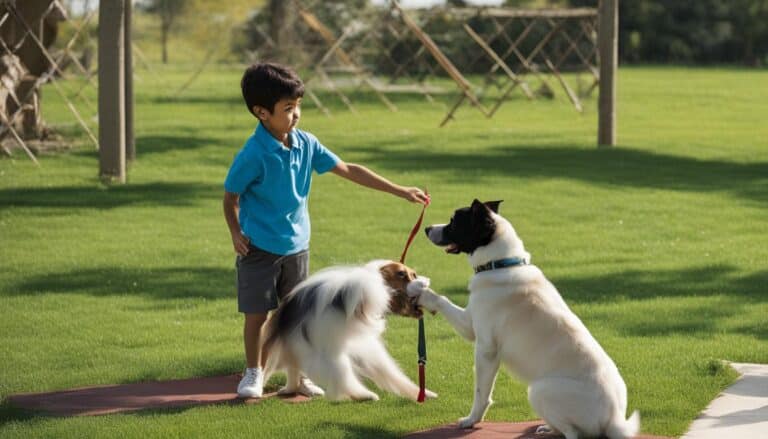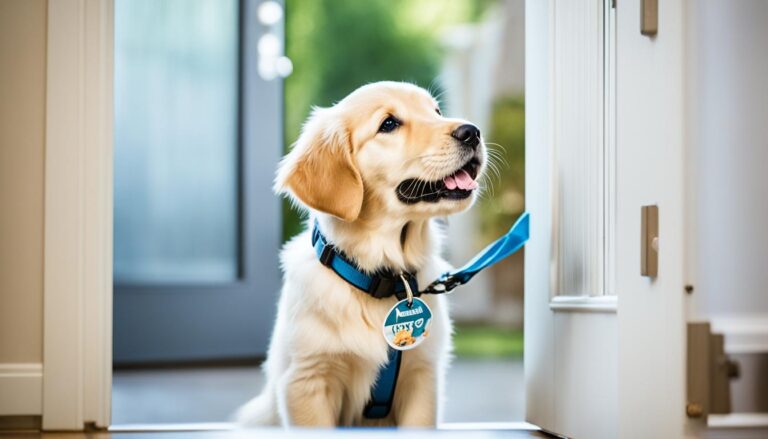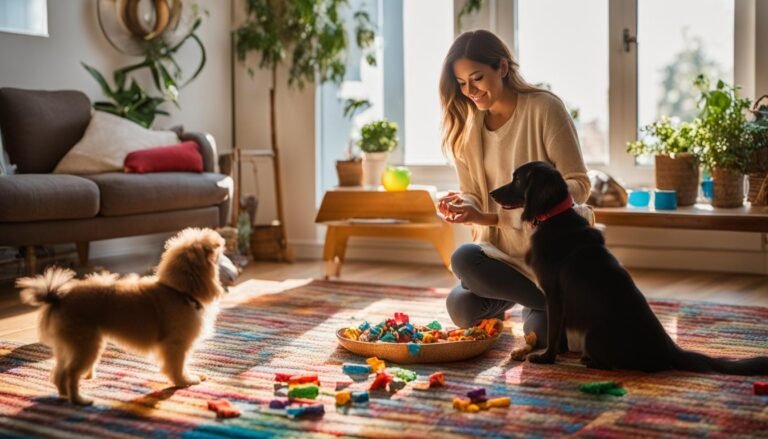How to Train a Dog Not to Pull
Training a dog not to pull on the leash is a common struggle for many pet owners. You may have experienced the frustration of being dragged down the street, your dog excitedly pulling ahead, seemingly unaware of your pleas for a more leisurely pace.
But fear not, with the right techniques and consistent training, you can teach your furry friend to walk by your side without the constant tug. Imagine the joy of going for a peaceful stroll, both you and your dog enjoying the experience together.
Meet Julia, a devoted dog owner who faced the same challenge with her energetic Labrador, Max. Every walk turned into an intense game of tug-of-war, leaving Julia exhausted and Max full of unspent energy. Determined to find a solution, Julia turned to the internet in search of dog training methods.
After reading countless articles and watching informative videos, Julia discovered the concept of “loose leash walking.” Intrigued, she decided to give it a try. Julia realized that by teaching Max that not pulling was the fastest way to get to where he wanted to go, she could achieve a more enjoyable walking experience for both of them.
Julia started following the techniques she learned, and although it required time, patience, and consistency, she began to see progress. Instead of letting the frustration take over, Julia would stand still whenever Max pulled on the leash and only move forward when he paid attention to her. With each step taken without pulling, Max was rewarded with treats and praise, reinforcing the idea that loose leash walking was desirable.
Over time, Julia noticed a remarkable improvement in Max’s behavior. The walks became more relaxed, with Max staying close by her side, attentive to her every step. By using positive reinforcement and creating a fun and rewarding environment, Julia was able to train Max to walk on a loose lead.
If you’re struggling with a dog that pulls on the leash, don’t despair. In the following sections, we will guide you through the steps to teach your dog to walk without pulling, provide helpful tips for leash training, and show you how to build on your training in various environments. Get ready to enjoy stress-free walks with your furry companion!
Steps to Teach Your Dog to Walk Without Pulling
To stop your dog from pulling on the leash, follow these simple steps:
- Start by using a proper leash and collar or harness that fits your dog comfortably. Ensure the equipment is secure and doesn’t cause any discomfort.
- Begin your walk in a calm environment with minimal distractions. This will help your dog focus on the training.
- Hold the leash firmly but don’t pull back. Instead, stand still and wait for your dog to relax the tension on the leash.
- As soon as your dog stops pulling and the leash becomes loose, reward them with praise, treats, or their favorite toy. This positive reinforcement will encourage them to continue walking without pulling.
- If your dog starts pulling again, repeat the process of stopping and waiting for them to relax the tension on the leash. Be patient and consistent.
- Practice short training sessions regularly to reinforce the behavior. Gradually increase the difficulty level by introducing more distractions and challenging environments.
- Consider using verbal cues such as “heel” or “let’s go” to signal your dog to walk beside you without pulling. Reinforce this command with rewards when they successfully follow it.
- Remember that training takes time, so be patient with your dog. Consistency is key to achieving leash walking success.
By following these steps, you can effectively train your dog to walk without pulling on the leash. Remember to always use positive reinforcement techniques and make the training experience enjoyable for both you and your furry friend.
Walking your dog properly and without pulling is essential for a pleasant and stress-free experience for both you and your pet. Not only does it make your walks more enjoyable, but it also ensures the safety of your dog and others around you. Stay consistent and patient, and soon your dog will master the art of walking on a loose leash.
Tips for Leash Training Your Dog
Leash training is an essential part of dog obedience training. It helps teach your dog to walk nicely on a leash and prevents them from pulling on walks. While it may take time and patience, the effort you put into leash training will lead to more enjoyable walks with your furry companion.
Here are some tips to help you in the process:
- Start training in a distraction-free environment: Begin by practicing leash training in a quiet and familiar location, such as your backyard or a quiet park. This will allow your dog to focus on learning without too many distractions.
- Use positive reinforcement: Reward your dog with treats and praise whenever they walk calmly on the leash without pulling. Positive reinforcement encourages good behavior and strengthens the bond between you and your dog.
- Be consistent with your commands: Use consistent commands, such as “heel” or “walk nicely,” when guiding your dog during walks. This helps them understand what behavior you expect from them.
- Keep training sessions short and frequent: Dogs learn best through short and regular training sessions. Aim for multiple sessions throughout the day, keeping each session around 10 to 15 minutes long.
- Choose the right equipment: Consider using a front-clip harness or a head collar to help prevent your dog from pulling. These tools provide additional control and make it easier to redirect their attention back to you.
- Practice in different environments: Gradually introduce your dog to different environments with varying levels of distraction. This helps them generalize their leash training skills and remain focused on you, even in busier areas.
Remember, leash training is an ongoing process, and consistency is key. With time and patience, you can teach your dog to walk nicely on a leash and enjoy stress-free walks together.
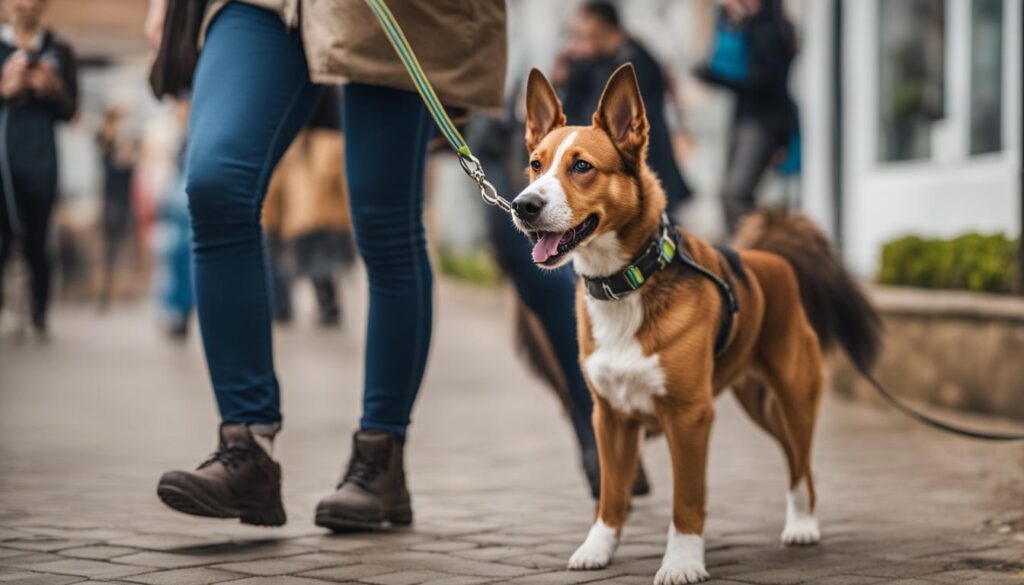
Building on Leash Training in Different Environments
Once your dog has learned to walk without pulling in controlled environments, it’s time to take their training to the next level and practice in different environments. This will help your dog generalize the behavior and respond appropriately in various situations. It’s important to remember that dogs don’t automatically transfer their training skills from one environment to another, so consistent practice is crucial.
To ensure that your dog stays focused and continues to walk nicely on the leash, you can incorporate specific leash training aids for dogs. These aids can provide extra control and support during your training sessions.
- Front-Attachment Harnesses: These harnesses are designed to discourage pulling by redirecting your dog’s forward motion. The leash attaches to the front of the harness, which gives you more control and helps prevent your dog from pulling. It promotes a balanced and evenly distributed pressure, making it a popular choice for leash training.
- Head Collars: Head collars, like the Gentle Leader or Halti, fit over your dog’s nose and behind their ears. They work by controlling your dog’s head movements, giving you greater control over their direction and reducing their ability to pull. It’s important to introduce head collars gradually and accustom your dog to wearing them before starting leash training.
- Training Leads: Training leads or long lines are longer leashes that give your dog more freedom to explore and move while still maintaining control. They are useful for training your dog to walk politely off-leash in safe and secure areas. Remember to use a harness or collar appropriate for your dog’s size and breed when using a training lead.
Regardless of the leash training aids you choose, it’s essential to continue using positive training techniques and reinforcement to encourage good behavior. Regularly reward your dog with praise, treats, or toys when they walk nicely on the leash. This reinforcement will strengthen their understanding and motivation to maintain loose leash walking.
Remember, consistency and patience are key during leash training. Every dog is unique, and the learning process can vary. Stay positive, provide clear communication, and practice in different environments to help your dog become a well-behaved companion during walks.
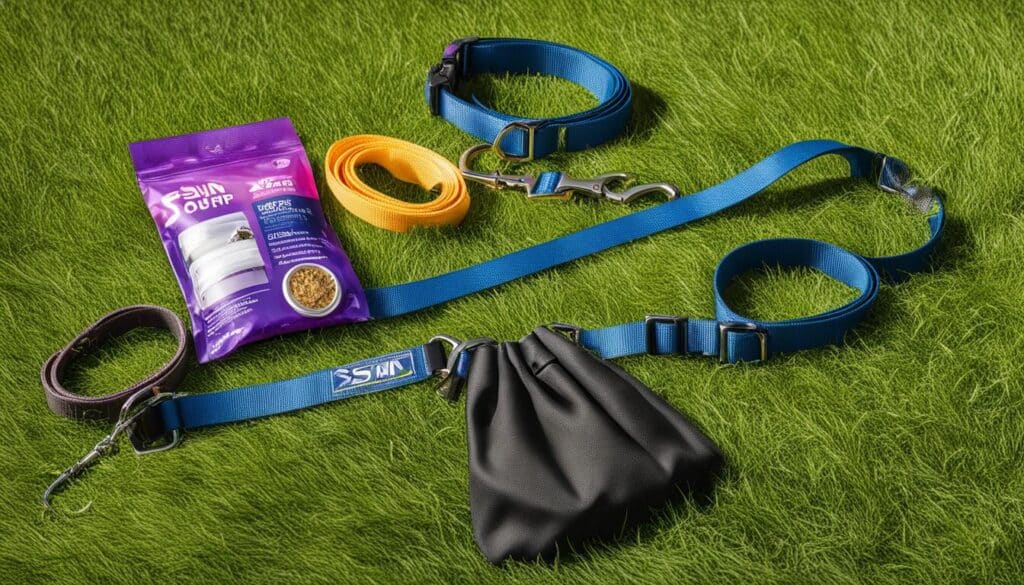
Training Your Dog to Heel
Heeling is an essential skill to teach your dog for situations where you need them to be close to you and attentive. Whether you’re walking through a crowded area or practicing dog walking etiquette, having control over your dog’s leash is crucial. Here’s how you can train your dog to heel:
Start the training process in the comfort of your home. Hold a treat in your closed fist and bring it down to your thigh. Slowly lead your dog by moving your closed fist along with the treat, ensuring it stays near your thigh. Reward your dog with a treat when they follow your fist and walk beside you.
As your dog becomes familiar with this exercise, you can gradually transition to using an empty fist as a signal for “heel.” Continue to walk with your dog, keeping your empty hand close to your thigh. Whenever your dog walks beside you, reward them with praise or a treat. Remember to be consistent and patient throughout the training process.
Consistency and repetition are key when training your dog to heel. Practice this exercise in various environments, gradually increasing distractions to solidify your dog’s understanding of the “heel” command. With time and perseverance, you’ll have a well-trained dog who walks politely on a leash, exhibiting excellent leash control.
